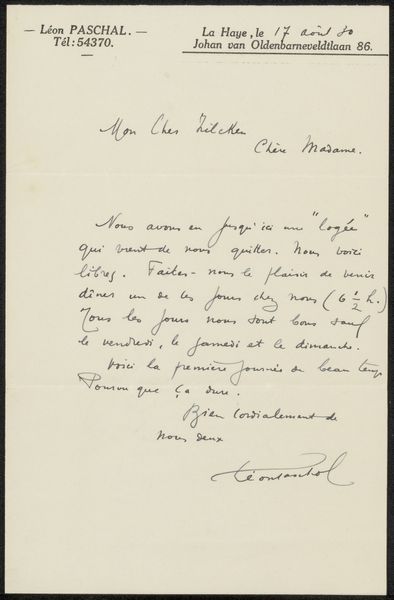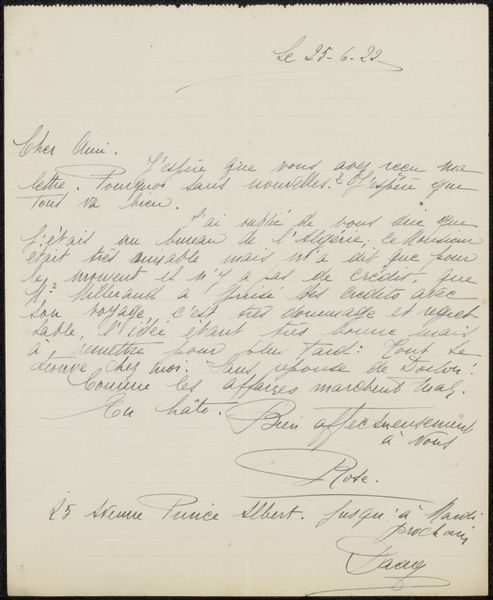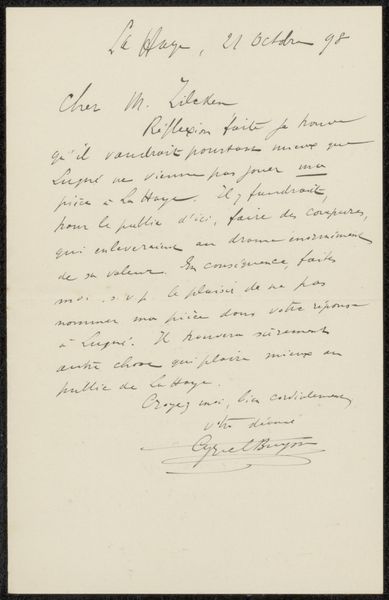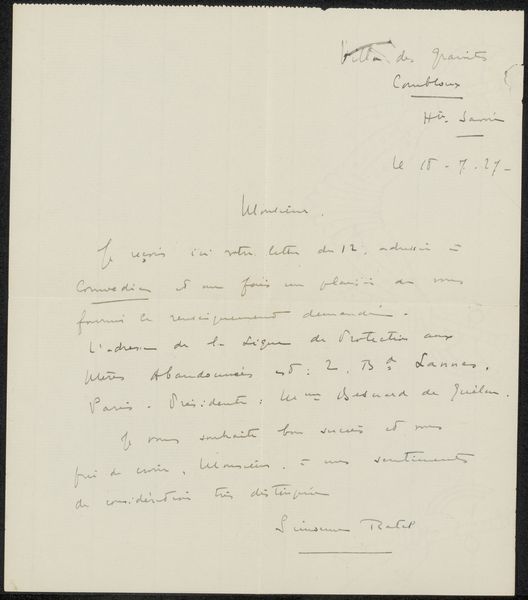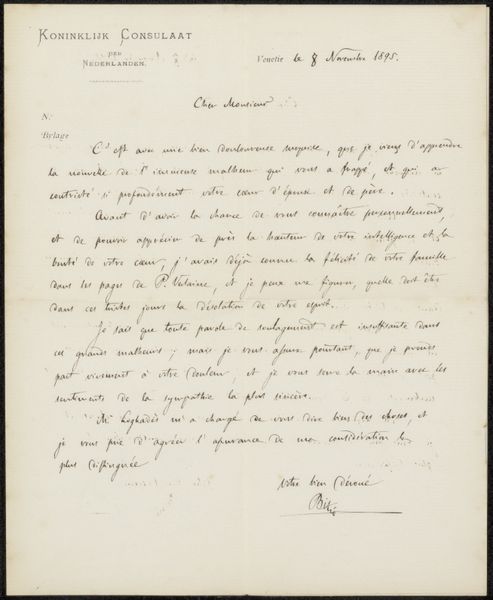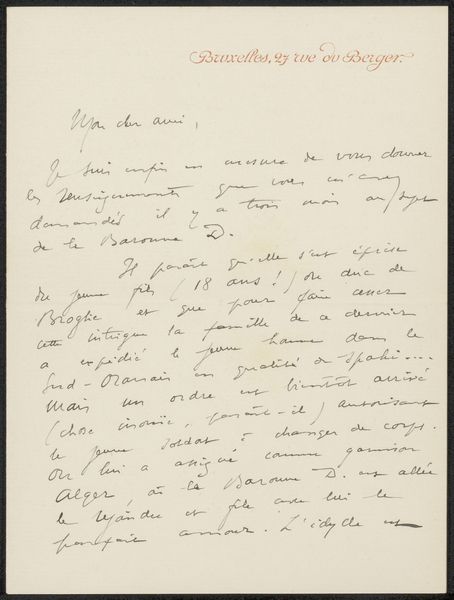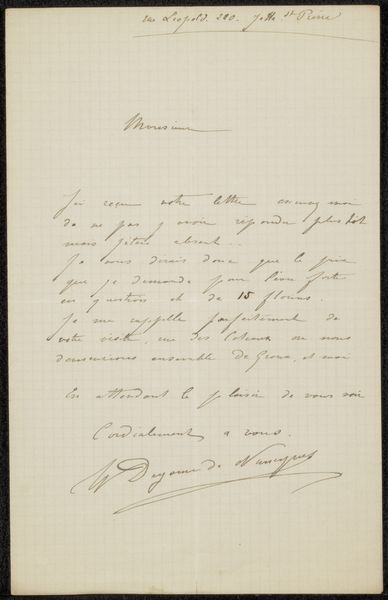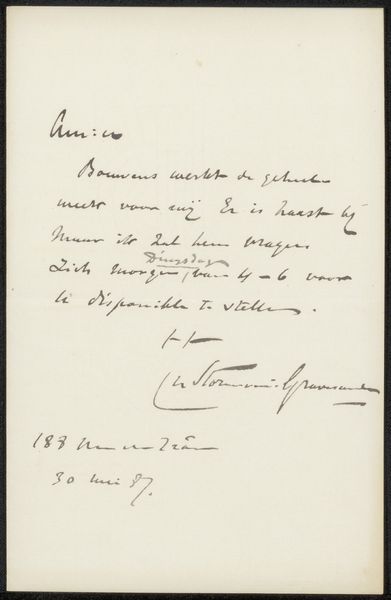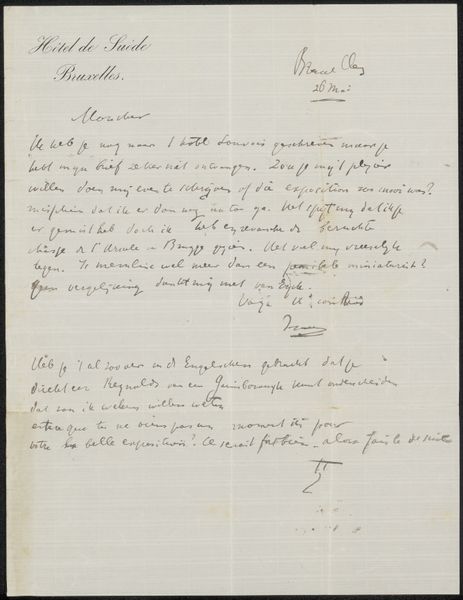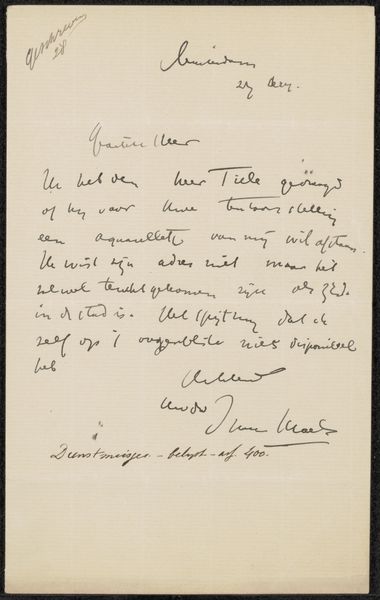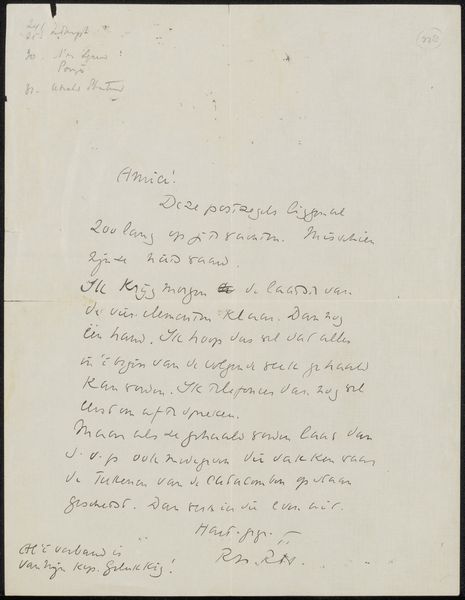
drawing, paper, ink
#
drawing
#
paper
#
ink
Copyright: Rijks Museum: Open Domain
Curator: Here we have "Brief aan Philip Zilcken" by Auguste Delaherche. It's difficult to put an exact date on it, but we believe it originates sometime between 1901 and 1909. Executed in ink on paper, it presents as a direct communication from the artist. Editor: It immediately strikes me as intimate, you know? The handwriting, the personal address… it’s inherently revealing. The slight discoloration of the paper even lends a feeling of delicate age. It’s quiet, in a way. Curator: Absolutely, the personal nature is central. Delaherche, who primarily identified as a ceramicist, is here engaging in a different, more textual mode of expression. Note how even his signature possesses an artistic flair; it transforms the mundane act of correspondence into a visual artifact. Consider also the context: Letter writing in that period carried significant symbolic weight—gestures of friendship and professionalism. Editor: True. Thinking materially, paper became much more widely accessible during the late 19th century due to industrial production. The drawing in ink makes me wonder if it could’ve been created while traveling or somewhere away from his studio pottery equipment, a means to sketch or keep track of notes or inspirations. Maybe writing by hand felt very different than his labor manipulating clay and fire in a ceramic studio. Curator: That's an insightful observation. The handwritten nature underscores a degree of considered thought, a performative expression crafted both for immediate comprehension, and also for posterity as it now functions. His flourishes aren’t merely functional—they’re imbued with conscious aesthetic decisions. This work exemplifies the human touch present during an increasingly industrialized age. Editor: It’s true. Looking closely, it’s interesting to observe the way in which materiality shifts with technology; from handwriting to mechanized production, with social value imbued into those actions depending on who holds them, like in a personal correspondence of this kind. I appreciate seeing the artist's touch present in even the most intimate and seemingly mundane means of making. Curator: Indeed. It gives us a small peek into the working method, both aesthetically and materially, of an important figure in ceramic arts. Editor: Right. It reminds us of the interconnected web of artistry and ordinary existence.
Comments
No comments
Be the first to comment and join the conversation on the ultimate creative platform.
